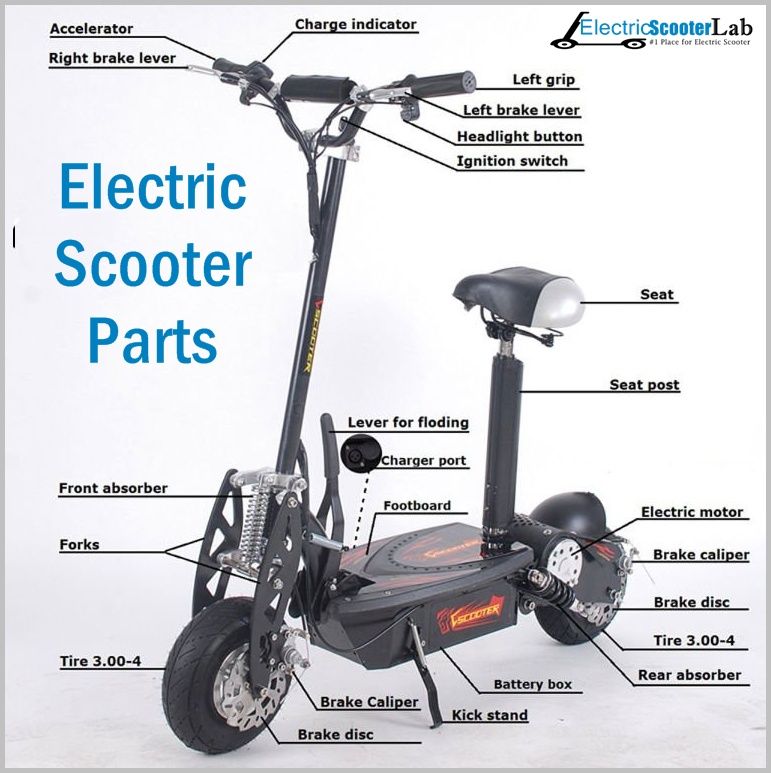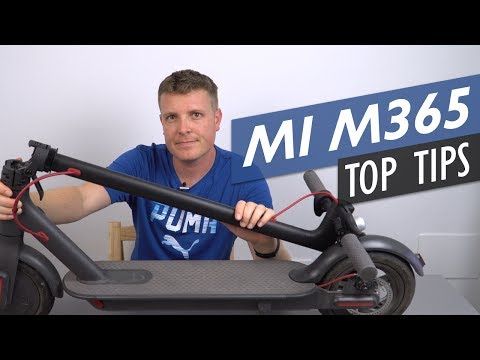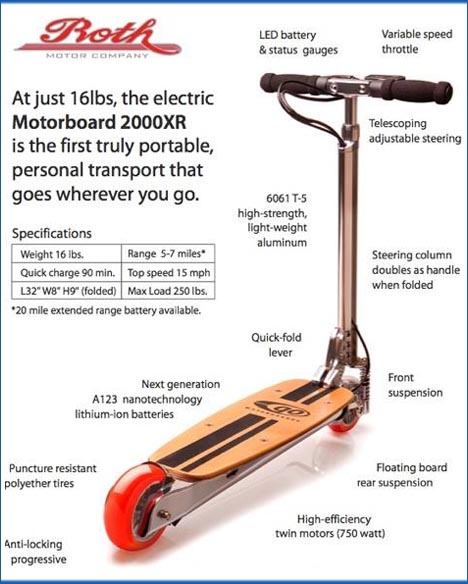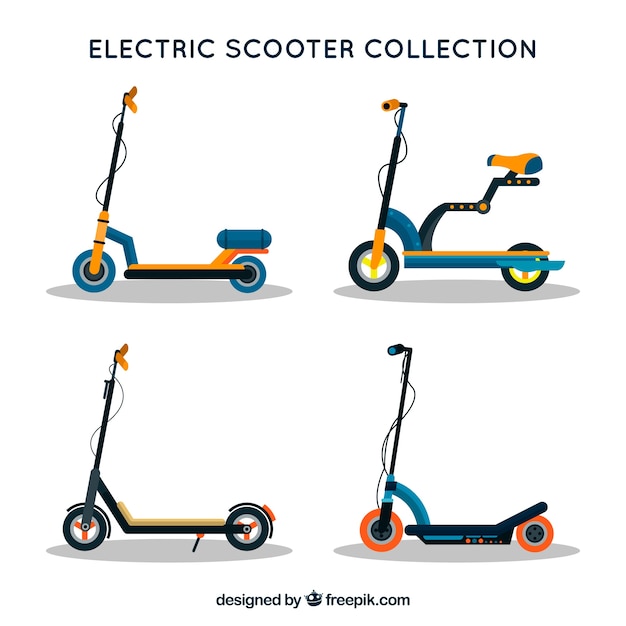It’s never fun when it happens, but it’s a fact of life – pneumatic-tire electric scooters get flat tires. The risk of a flat tire will always be present, but after years of using my Xiaomi M365 Pro (notorious for flats), I’ve developed a checklist of a few simple steps that go a long way to prevent flat tires in electric scooters.
And luckily, even if a flat happens to your scooter, you can fix or mitigate it rather easily.
If you get a flat tire on your scooter, stop riding immediately. Riding with a flat tire will irreversibly damage your rims. Get your scooter to a repair shop, or use one of several methods to fix the flat yourself.
Let’s take a deeper look into the reasons why flats happen, how common are they, and exactly how to prevent, and possibly eliminate them.
There are several reasons why a flat tire can happen to your scooter.
The first one is a sharp piece of debris puncturing your tire. This can be any object that penetrates the inner tube, including glass, nails, wood, anything that’s sharp and hard.
The second reason why flats happen is because of a strong impact. This can happen, for example, if you hit a sidewalk while riding fast, or ride fast over rough terrain.
The third one is more pressure applied on the tire than it can handle. Usually, this happens to older, worn-out tires, that have taken some abuse over time. Often, they are under-inflated as well, which greatly increases the odds of getting a flat.
Also, related to the above, you must ensure that your tires are inflated at the correct tire pressure. Both over-inflated and under-inflated tires can easily result in flats.
The final and least frequent reason is improper installation of the tire. Your scooter will arrive with the correct installation 99.99% of the time. You only need to make sure that if you or a mechanic replace a tire, it is properly installed.
Flat tires in electric scooters with air-filled tires are still pretty common, and are one of the most frequent scooter defect types. This is especially true for inner-tube tires. With any popular scooter, on average, you may get one flat every six months.
Further, there are two different types of air-filled tires :
If your scooter has inner-tube tires, the chances of a flat are bigger. Inner-tube tires are more common than tubeless tires.
In scooters with bigger, patterned tires, or scooters designed for off-road experiences, flats are less common. These models are built to take more punishment on rough terrains, so you won’t get a flat because of a small piece of glass on the street.
Flats don’t happen to models with solid tires. However, solid tire scooters come with many tradeoffs, and may not always be a good solution. We will examine these tradeoffs below, and see whether a solid-tire model would make more sense.
Flats are somewhat common, and you shouldn’t panic if they happen. Let’s see how to address them.
There are three main ways to fix a flat tire.
The basic method to fix a flat involves:
However, this process can be very complicated for some models. Sometimes, removing the tire means you need to remove a lot of the parts around the wheel. Or maybe, installing/uninstalling the tire is very complex or requires tools you don’t have.
Sometimes, removing the tire means you need to remove a lot of the parts around the wheel. Or maybe, installing/uninstalling the tire is very complex or requires tools you don’t have.
In that case, consider the second method, which is fixing the tire without removing it.
The third method is taking your scooter to a mechanic.
Let’s examine the first two methods further.
You will need the following tools:
Before you start:
 If you lose a screw or some important part, you will have to order a new one and wait for it to arrive (not fun!). I just get a plastic box and put everything in there when I’m doing something like this.
If you lose a screw or some important part, you will have to order a new one and wait for it to arrive (not fun!). I just get a plastic box and put everything in there when I’m doing something like this.Start by releasing all the air that may have remained in the tire. Unscrew the valve and press inside it with the Allen key to deflate it.
On many models, you will have to continue by removing the plastic covers around the wheels. Use the appropriate Allen wrench key for this, it should have arrived together with your scooter when you first bought it.
After that, you will have to loosen the nuts around the wheel from both sides, so that you can remove them. Use a wrench for this.
Remove the wheel of the fork. Be careful not to scratch or damage any parts.
Be careful not to scratch or damage any parts.
Then, using tire levers, remove half the tire from the rim. Don’t remove it entirely, just have half of the wheel “protruding” through the tire, like concentric circles. You can use a solution of water with dish-washing soap to make the removal process easier.
Now, here’s the tricky part. You will have to dig with your fingers between the wheel and the tire, and find the inner tube. Remove it.
Only then proceed to remove the wheel from the tire completelly.
We are standing at a crossroad now. You can decide to replace the tube, or repair it. This will depend on how badly was it was damaged – if the holes are too big, use a new tube.
If you want to try and repair the tube itself:
After you have the tube, either the repaired or the new one, clean both the inside of the tire, and the wheel itself. You don’t want any debris there – it will puncture your tire again in no time!
You don’t want any debris there – it will puncture your tire again in no time!
Now, you have to put the tire back on the wheel. Make sure the tire direction is the same as when you started. Usually, the arrows in the pattern point down.
Then insert the tube between the wheel and the tire. A small but very effective trick here – start with the valve first.
Use the tire levers again, to put the tire back around the wheel.
Inflate the tire using the tire inflator. Make sure it doesn’t leak any air. If your inflator has a gauge, make sure you pump the tires to the pressure that your scooter’s manual recommends.
When it doesn’t, put all the parts back into place. Make sure you tighten everything nice and strong, but not so strong that the wheel has trouble spinning. The wheel must be able to spin freely after you put it back on.
Congratulations, you repaired your flat!
I know this entire process is difficult to understand through text only. Here’s a great video demonstrating how to install a new tube on a Xiaomi M365.
And another great video, this time showing how to install the tire but also repair the tube itself, also on a Xiaomi M365.
With some scooter models, you have to basically disassemble half the scooter just to remove a wheel.
If you don’t feel like doing that, or you don’t have the necessary tools, you can consider a simple, cheap, quick way to repair a flat. However, it will only work for small punctures – big damage and blowouts will not be fixed with this method.
What you will need:
With this method, you just:
The best thing about Green Slime is that not only you can use it to fix flats, but you can also use it before a flat happens to prevent flats!
You can find Green Slime on Amazon here, the 32-ounce bottle is much better value than the 8-ounce one.
Here’s a great video of repairing a flat tire with Green Slime.
Even though fixing a flat can be easy (and even fun if you enjoy tinkering with your scooter), it’s still a headache.
To avoid flats as much as possible, you need to follow a healthy maintenance routine, but also apply a few extra tricks.
Regularly inspect your tires for damage. Remove and clean any debris or junk stuck in or around the wheels.
Before every ride, an old-school kick in the tire will suffice. I recommend measuring the tire air pressure and making sure it’s sufficiently inflated at least once a week.
Further, you should ride as safely and responsibly as possible. You may be surprised, but sharp objects are actually less common reasons for flats. More often than not, the rider carelessly riding at great speed and hitting something is a bigger risk. Follow these steps to prolong your tire life when riding:
Before we go on with the more advanced tips, a recommendation – don’t fix what’s not broken. These methods all require tinkering with the tires.
These methods all require tinkering with the tires.
If you’ve never had issues with your tires, you can skip this section. Unless you’ve had a flat, these methods may be more trouble than they’re worth.
But if you’ve already had a flat, they are very easy to apply.
Still, it is recommended to only choose one of them, as it hasn’t really been tested if they work well together.
We already mentioned that Green Slime or another sealant is a great way to prevent further flats. You can definitely use it as a preventive matter in any case, but I’d consider it only if I’m fixing a flat already. From all the advanced methods, this is the one I would recommend.
Another great tip in case you’re already replacing your inner tubes would be to get heavy-duty, thorn-resistant inner tubes. These will be a bit more expensive, but they will definitely last longer. I would recommend this solution if you live in a city with lots of debris on the streets.
Further, you can consider anti-puncture tape, or tire liners, to make your inner tube more resistant to flats. It is a hard, rubbery tape that you tuck between the tube and the tire. You will need to deflate the tire first.
It is a hard, rubbery tape that you tuck between the tube and the tire. You will need to deflate the tire first.
You can find the best anti-puncture tape, Mr. Tuffy on Amazon.
Here’s a great video demonstrating the process on bike tires.
Finally, one drastic preventive measure is to replace the tire, the tube, or both, if they are worn out. This is the most expensive, most complex step you can take to make sure you don’t get a flat, but I would only recommend it if you’ve had your tires at least for 5 years and you’re starting to notice they’re wearing out.
If you’re constantly getting flats, even after you’ve tried some methods to reinforce your air-filled tires, then you should seriously consider getting a scooter with solid tires.
Some places and environments are simply too much for the average air-filled tires. Many cities are full of small pieces of junk and debris that are unforgiving to the typical 8. 5-inch tire.
5-inch tire.
But the downsides of solid tires are numerous. Besides your rides being very shaky and uncomfortable, you will also get poor traction, fewer options for adjustments, and in some cases worse performance overall.
Plus, it’s not like you’ll buy one pair of solid tires and you’re set for life. Solid tires wear out as well, oftentimes even faster than pneumatic ones.
To learn more about the different types of tires, and how they compare to each other, check out our full solid vs pneumatic tire guide.
This is a great rule of thumb: if you’ve had more than 3 flats in a year, only then consider getting a solid-tire scooter, or replacing your air-filled tires with solid ones.
Want to get cool tips, exclusive discounts and promotions, and unseen scooter hacks? Join Scooter Secrets.
Join Now
Matt Trajkovski
I love electric scooters, so I decided to make a blog about them. I like doing a lot of research on various models and brands, looking for great value and performance, both through data and experience.
By Justin
Justin is a cofounder of ESG and has a degree in engineering. He writes about the science and technology of electric scooters.
FacebookTweetLinkedInPin
Protecting your electric scooter’s tires with slime (also called tire sealant) is one of the easiest ways to prevent flats. Electric scooter slime is a also a quick way to easily repair a flat tire. This guide teaches you how to do it.
Electric scooter flats are the most common type of repair needed for electric scooters, according to our survey data.
Whether you have inner tube or tubeless tires, tire slime is one of the best ways to prevent flat tires. For tubeless tires, make sure you buy tire slime designed for tubeless tires (though most scooters have inner tube tires).
What we like about this tire sealant is that it is cheap, easy, and fast. The procedure to install the tire slime is the same on all electric scooters.
The procedure to install the tire slime is the same on all electric scooters.
Tire slime or tire sealant is an inexpensive and often brightly-colored mixture of glue, binders, and synthetic fibers that are injected into your electric scooter’s tire. When the tire spins around, the electric scooter slime will coat the inside wall of tire. If a sharp object punctures your tire, the air pressure will force the tire slime out of the tire and into the puncture. Once the slime has filled the puncture and contacted outside air, the slime will cure through the process of polymerization, sealing the hole.
The tire slime will also work to fix electric scooter flat tires that have already developed. In this case, the tire is injected with tire slime and manually rotated to coated the inside of the tire. The tire is then reinflated with a pump. Pressure from the pump will force the slime into the puncture where it will polymerize and seal the tire.
Note: tire slime will not repair large tears or punctures.
Pneumatic tires have huge benefits compared to solid tires, however they require a little extra care to prevent flats. You can read about the benefits of pneumatic tires in our tire guide.
Slime is one of the easiest ways to prevent flat tires and is quite effective. For more ways, check out our guide to preventing flat tires.
To find electric scooters with pneumatic tires (or with airless solid ones), try our electric scooter comparison list. It lets you sort and filter electric scooters by specifications like tire type.
Share
Comment
Discuss in Our Forums
About the Author
Justin
Justin is a cofounder of ESG and has a degree in engineering. He writes about the science and technology of electric scooters.
Learn more about the author
Author: Vladimir Ivanov
Tire puncture on our roads is not uncommon. But if the car always has room for a spare tire and changing it 10 minutes after an unfortunate incident, we can move on, then on a scooter, this situation can lead to problems.
In this case, the only way that can help you get home or a tire service is a special tire sealant . This tool has long appeared under the seat of many European scooters straight from the factory, but for many of our fellow citizens, the principle of its action remains mysterious and unknown. To dispel the mystery, I decided to repair my tire, with a puncture diameter of about 3 mm, with
To dispel the mystery, I decided to repair my tire, with a puncture diameter of about 3 mm, with
, which is produced by the Germans from Liqui Moly.
On the surface is a small black bottle with a transparent silicone tube. From the description it appears that the internal pressure in the polymer and solvent composition, and the composition of the product can inflate tube and tubeless tires without disturbing the balance of the wheel.
The main thing is to observe the following conditions:
 e., the tire pressure has been brought to an acceptable level).
e., the tire pressure has been brought to an acceptable level). In my case, the pressure gauge did not show the presence of air pressure in the tire , but the wheel was not completely deflated either. I had to believe the readings of the device and continue the experiment. Next, after shaking the bottle of sealant well, I connected it to the nipple of the flat tire and pressed the start button. With a slight hiss of white, the substance began to fill the tire. It took the German drug about a minute to completely exit the balloon. The only thing that seemed inconvenient during the procedure was that there was no latch on the balloon, and during the operation the valve had to be kept open. But on the other hand, for wheels of small diameter, like a scooter, the funds may be enough for several times, and the retainer on such cylinders is usually disposable.
When the composition in the tank ended, I, as written in the instructions, drove 2 km in a calm mode. After prohvaty pressure measurement showed a pressure of 2 atmospheres. Well, an indicator that allows you to calmly move not only to the tire fitting, but also further.
After prohvaty pressure measurement showed a pressure of 2 atmospheres. Well, an indicator that allows you to calmly move not only to the tire fitting, but also further.
The inside of the tire was completely dry and covered with a thin layer of shiny film after treatment with the preparation 24 hours after the run. Inside there was no foam that would have to be torn off with improvised means.
Tests have shown that the product has the declared properties in full, and can be useful on a long journey, since it does not take up much space, but copes with punctures.
90,000 features, differences from ordinary bicycle wheelsContent
Lailed tires on a bicycle-a common problem, which lies in the road as starting as starting starting. cyclists and seasoned bikers. Owners of velobikes have to regularly resolve the issue of why a flat tire and how to fix it.
Note!
Bicycle wheel goes flat for various reasons. A bicycle tire may be worn out, under-inflated or over-inflated, damaged on impact, or damaged by a foreign object.
Forget about your bike wheel problems, buy and install airless bike tires. They are not prone to punctures and last thousands of kilometers. Non-pneumatic bike tires will not let you down at the wrong time, on the road you will not need to stop and repair a flat tire.
Airless tires are made from a special polymer compound that provides vibration damping and a smooth ride. At the same time, they are distinguished by increased resistance to abrasion, shock and other mechanical loads.
| Comparison | Regular tires | Airless tires |
| Cushioning | Inflatable tires provide excellent damping. | Modern models perform comparable to inflatable tires |
| Durability | Puncture and tear resistant. | The service life is thousands of kilometers |
| Rigidity | Pneumatic tires have decent softness and elasticity. | Airless tires are stiffer but can be customized. |
Note!
Airless tires are a great way to leave patches and a bike pump at home forever.
Tannus anti-puncture bicycle tires are considered one of the best in the segment. They are not prone to punctures, have a good roll, adequately dampen shocks and vibrations. This model is suitable for everyday trips, touring, road racing, trips to puncture-prone areas.
Nexo airless tires are available in two versions:
Nexo Tires one-piece tires fitted to existing wheels, rated for 5,000 kilometers. Ever Tires bike tires complete with rims will be used up to 8000 kilometers.
Nedong non-pneumatic tires have a reinforcing rib and are characterized by sufficient damping properties. They are made of non-toxic and environmentally friendly materials, are not afraid of exposure to acid rain, ultraviolet radiation, mechanical stress. The service life of brand bikes is at least five years.
The most common cause of a flat tire is tire wear. Do not forget to check the condition of the wheels and change worn out tires in a timely manner.
If you're not ready to say goodbye to conventional inflatable bicycle tires, always have your bike first aid kit with you.
Solid tires are not recommended for applications where frequent heavy braking is expected. For example, they are not suitable for skid braking due to rapid wear.
Where can I buy cheap airless bicycle tires?
Such tires can be ordered in online stores or bought on Aliexpress.